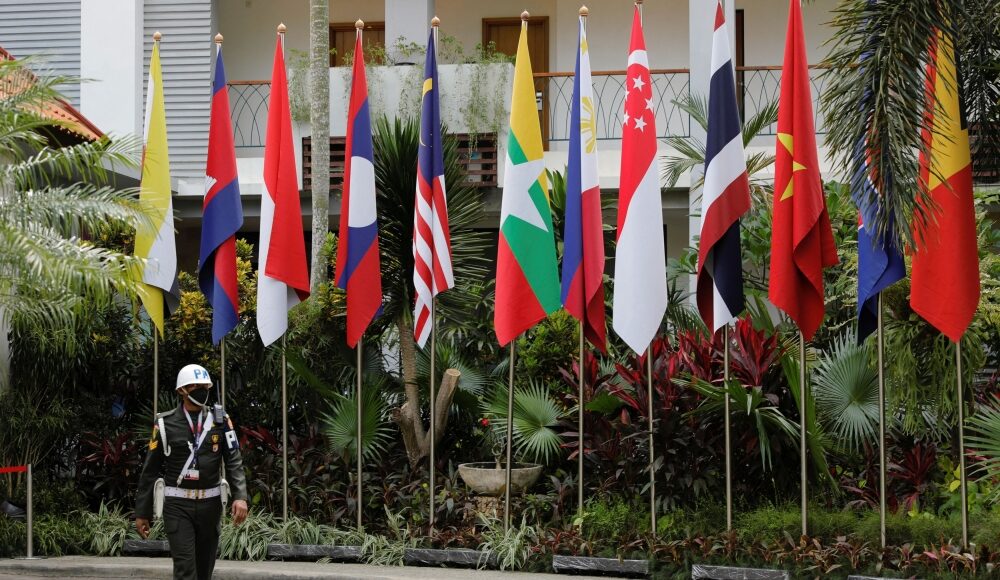MAY 15 — Malaysia will host the inaugural Asean-GCC-China Summit on May 26-27 2025—an event whose significance may well echo that of the 1955 Bandung Conference. Come September 2025, Malaysia will also host the Asia Zero Emissions Community (AZEC).
But to achieve that level of impact, this summit must do more than produce joint declarations or glossy memorandums. It must redefine how the global economy is stabilised in an age of fragmentation and coercion.
It must demonstrate that a new trade order, anchored in interregional pluralism, can rise from the East and South—not to replace the West, but to rebalance what has become dangerously unhinged.
The stakes are high. Geopolitical fault lines have hardened, protectionism has surged, and the multilateral trading system is under siege.
The World Trade Organisation (WTO), once the guardian of rules-based trade, has been sidelined by economic nationalism, while unilateral tariffs and weaponised sanctions increasingly dictate the flows of goods, capital, and data. Against this backdrop, the convergence of Asean, the Gulf Cooperation Council (GCC), and China is not incidental—it is strategic.
Together, they represent over 2.5 billion people, control some of the world’s most vital maritime choke points—the Strait of Malacca and the Strait of Hormuz, to name but two—and are deeply embedded in overlapping networks of energy, infrastructure, digital platforms, and manufacturing ecosystems.
The world must not misread this summit as another diplomatic ritual especially when this summit can lead to the Asia Zero Emissions Community (AZEC) promoted by Japan and also the East Asian Summit (EAS) by September and No November 2025 respectively.
Thus, its real promise lies in its potential to institutionalise a new form of multilateralism rooted not in ideology but in necessity.
This is a historic opportunity to chart a path toward stable trade governance based on three pillars: tariff predictability, supply chain resilience, and a future-ready digital economy. These goals are not aspirational—they are urgent.
Malaysia is hosting several key international meetings in 2025, including the Asean-GCC-China Summit in May and the Asia Zero Emissions Community in September. — Reuters pic
From microchip shortages and food inflation to vaccine nationalism and green energy disputes, the last five years have proven that no region can navigate economic shocks in isolation.
In this context, the trilateral structure of the summit offers a counterweight to the fractured Western-led trade regimes that now revolve around punitive measures, zero-sum thinking, and “de-risking” rhetoric that barely disguises economic containment. What Asean, the GCC, and China can offer instead is a pluralistic framework of shared access, mutual respect, and real-time coordination.
The success of the Regional Comprehensive Economic Partnership (RCEP), which already includes China and Asean, not excluding EAS,.offers a promising model—one that could be expanded to include GCC countries seeking greater diversification and integration beyond hydrocarbons.
Yet this vision cannot rest on economic logic alone. It must be politically willed. That is where the dynastic element of many participating states—so often derided in Western commentaries—becomes a hidden strength.
Whether in the House of Saud, Malaysia’s political lineage, or China’s enduring leadership structure, dynastic continuity can provide the long-term strategic vision often missing from short-term electoral systems.
Just as the Bandung Summit was driven by post-colonial sovereignty, this summit can be driven by a post-hegemonic vision of shared economic security—one in which no single power can unplug or destabilise the system at will.
Indeed, what the world should look for from this summit is not the usual fanfare of infrastructure deals or digital partnerships, but the creation of permanent institutional mechanisms.
These include standing trade coordination councils, trilateral dispute resolution protocols, and joint emergency frameworks for future supply chain disruptions.
This would move the Asean-GCC-China triangle from a transactional relationship to a structural one—a shift that could protect global trade from the spasms of geopolitical rivalry and unilateral disruptions.
For China, which is navigating rising hostility from the West, the summit offers a way to demonstrate that its future lies not in domination but in integration.
For the GCC, increasingly seen as a hub for strategic investment and digital connectivity, this is a chance to transition from oil diplomacy to platform diplomacy.
For Asean, long prized for its centrality, this is a moment to prove that neutrality does not mean passivity, and that economic interdependence can be transformed into strategic agency.
Malaysia, as the host, stands at the confluence of these ambitions. Prime Minister Anwar Ibrahim’s invitation to Chinese Premier Li Qiang to join the summit shows Malaysia’s willingness to serve as a convener of new coalitions—not just to advance its national interest, but to stabilise a region and world in flux.
To be clear, the world should not judge this summit by the number of agreements signed or the length of its closing communiqué.
Its success will be measured by whether it creates durable channels for cooperation, not just ceremonial ones. Does it establish a trilateral trade council? Does it create a platform for synchronized crisis response?
Does it offer a digital code of conduct or a low-carbon economic blueprint that binds all three actors not unlike the inclusion of AZEC concurrently promoted by Japan?
Of which AZEC is heavily promoted by Prime Minister Ishiba Shige and former Prime Minister Kishida Fumio of Japan.
If so, then this summit will not merely echo Bandung—it will extend its legacy into the twenty-first century, allowing all major powers a constructive role in a new global trade order.
Indeed, in a world increasingly defined by fragmentation, the Asean-GCC-China Summit plus future AZEC and EAS in 2025, Malaysia offers a rare chance to build something that endures.
That is a trade order that cannot be unilaterally dismantled, a multilateralism that cannot be hollowed out, and a future where prosperity does not come at the cost of sovereignty or peace let alone climate change.
This is the signature diplomacy of Prime Minister Anwar Ibrahim the champion of Global Dialogue Society which other regional organizations and great powers do embrace.
* Phar Kim Beng is a former Harvard fellow and a professor of Asean Studies at the International Islamic University Malaysia. He writes widely on regional diplomacy, civilisational dialogue, and global trade governance.
** This is the personal opinion of the writer or publication and does not necessarily represent the views of Malay Mail.





